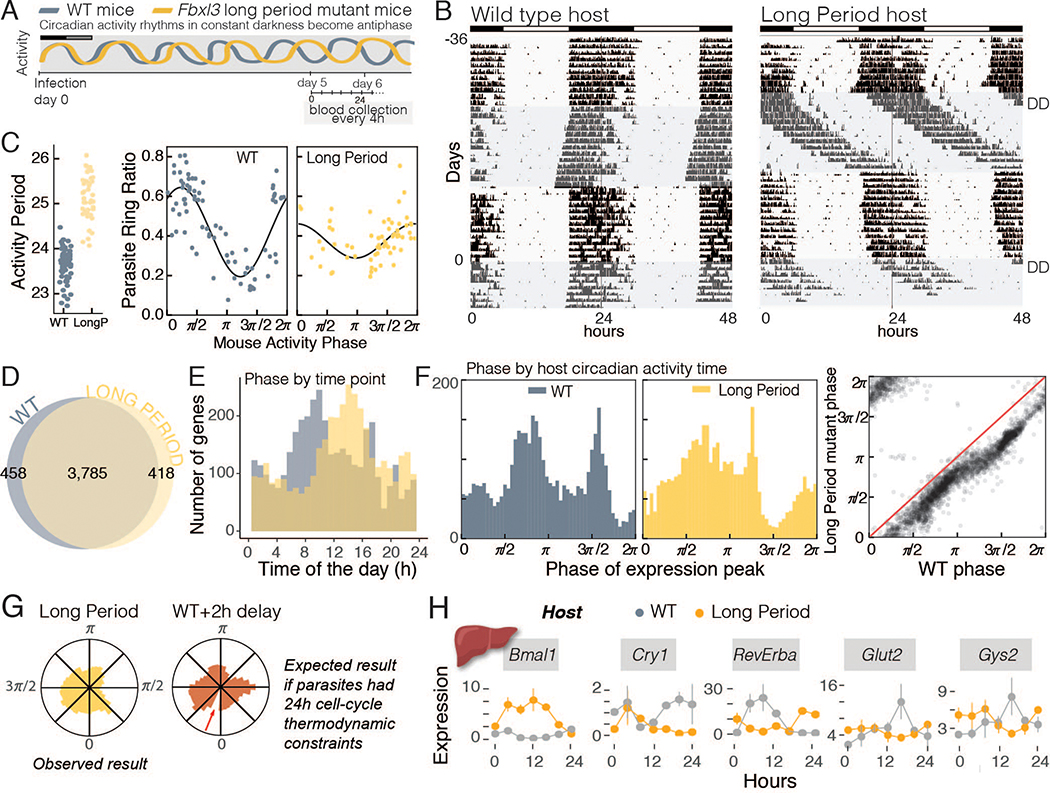Fig 2.
Parasite rhythms are not locked to a 24-hour period, but are instead plastic and adjust to a different period length. A. Schematic representation of the experimental design in which WT mice or a long circadian period mutant were infected in complete darkness (DD) where rhythms shift to the opposite phase after 6 days. Blood was collected every 4 hours for three consecutive days starting on day 5 post-infection. B. Running-wheel activity actograms to monitor circadian behavior upon release in complete darkness (shaded areas of the actogram). Mice were recorded for 36 days to characterize their phenotypes prior to infection (day 0, second period in DD, shaded area). C. Internal circadian period of each mouse (left panel). Asexual cycle timing was converted from collection time (from blood collected at standard local time) to match the circadian time of activity period of the host (n= 62 WT mice, n= 43 long period mice, from 3 independent experiments). D. Number of cycling genes of the parasite in each host. E. Phase of expression of cycling genes based on the clock (local) time of collection (ZT0 in the previous light/dark schedule, with 0 hours representing time at which lights were turned on prior to constant darkness), representative of day 6 post-infection (blood from 36 mice per group, from 2 independent biological replicates for each timepoint) and F. after matching to the circadian time of the host (reliable circadian onset identifiable for n=35 WT and n=29 long period mice), showing their alignment to host rhythms. For WT 2π is roughly 23.7 hours for each mouse; and for Long Period 2π is roughly 25.7 hours. Right panel shows the correlation of the phases among genes. G. Phase plots for parasite gene expression when infecting the Long Period mutants. On the left is represented the observed phase (peak expression) of the cycling genes, and on the right is the expected results for the phase of parasite gene expression when infecting Long Period mutants if the parasite rhythms were driven by a 24-hour thermodynamic constraint cell-cycle, i.e., would be a similar phase plot to when infecting WT mice with a 2 hour delay to resume cycle. H. Host liver gene expression of clock genes and two metabolic genes. Each time point is composed of 3–4 mice per condition, with line connecting them being only for visualization purposes. Error bars represent standard deviation.

